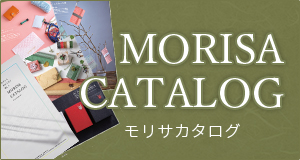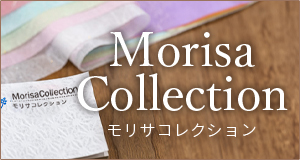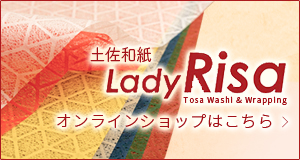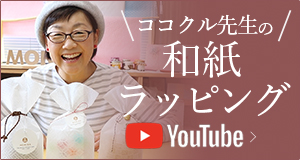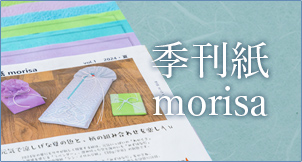About Washi
→ What is Washi?
→ What are the characteristics of Washi?
→ What is the difference between handmade and machine-made washi?
→ What is Tosa Washi?
→ What is the difference between Japanese paper and Western paper?
→ What is the difference between Japanese washi paper and foreign washi-like paper?
→ What is the difference between Japanese paper and non-woven fabric?
→ Is Washi an eco-product?
→ I have the impression that Japanese paper is expensive.
→ Can Japanese paper be preserved for a long time?
→ Is Japanese paper a neutral paper?
→ Can you send Japanese paper overseas?
→ What should I pay attention to when handling washi?
Q.What is Washi?
A.
The papermaking method introduced from the continent has been adapted to Japan’s climate, and the raw materials and manufacturing process have been changed to suit the climate.
Paper was originally made by hand using raw materials such as kozo (paper mulberry), mitsumata (mitsumata), and gampi (gampi), which were native to Japan. Reforms since the Meiji period have led to mechanization and improvements for pen writing and typing paper, and gradually wood materials such as pulp have also been used.Today, most of the paper produced in Japan is Western paper, which is made mainly from wood using methods imported from the West. There are two interpretations: “only handmade washi is original washi” and “machine-made washi is also washi because mitsumata and kozo are used as raw materials and the manufacturing process is similar to that of handmade washi.
Q.What are the characteristics of washi?
A.
It is characterized by its strong and soft texture and high shelf life, as well as by its sink straining process that takes advantage of the characteristics of the raw materials.
Q.What is the difference between handmade and machine-made Washi?
A.
Handmade washi is a traditional Japanese craft that is made by pouring raw materials of paper into a platform called noren-giga, and then making the paper uniformly and evenly thick while draining water.
However, it is truly unfortunate that production has been declining year by year due to environmental changes, which have resulted in a decrease in the raw materials used to make blinds and other utensils, and the aging of craftspeople. Even today, there are paper products that can only be made by hand, and each production area is making efforts to train successors to prevent the loss of advanced techniques.The machine-shoji process enables the continuous production of wallpaper and long products. Morisa manufactures machine-made paper mainly from kozo (paper mulberry), mitsumata (mitsumata), and ganpi (mitsumata).
Tosa.
Q.What is Tosa Washi?
A.
It is Japanese paper made in the Kochi region.
The Engishiki (Engi Shiki) of the Heian period (794-1185) already recorded the production of high-quality paper in this region.In the modern era, mechanization was promoted based on the high technology of making thin Tosa washi, and large quantities of typing paper were exported to Germany and other countries.
Kochi Prefecture is known as “Typhoon Ginza” for its abundant rainfall, and there are many rivers with abundant water. Among them, the Niyodo River, which has its source in Mt. Ishizuchi, the highest mountain in Shikoku, has a large difference in elevation and has abundant and limpid water, and many paper production areas remain in its basin today. Morisa, located in Tosa City in the basin, uses the clear subsoil water of the Niyodo River for paper production.
Q.What is the difference between Japanese paper and Western paper?
A.
Paper is a paper with a smooth, homogeneous surface made of pulp, cotton, etc., with outstanding suitability for printing. Newsprint, drawing paper, and copy paper are typical examples.
Technology was introduced after the Meiji period (1868-1912) to produce these papers in large quantities by machine. Paper, which is inexpensive and can be produced in large quantities, came to be greatly consumed in the modernization of daily life.On the other hand, the use of washi for residential purposes such as fusuma (sliding doors), shoji screens, and paper curtains, as well as for practical purposes such as umbrellas and calligraphy, has been shrinking over the years, but the unique texture of washi is still sought after even today as people’s lives have modernized. However, the unique texture of washi is still sought after even in today’s modernized society.
Q.What is the difference between Japanese washi paper and foreign washi-like paper?
A.
Although many papers from Southeast Asia have been imported recently, there are many lovers of this paper because of its simplicity and low cost.
Some products are made in the same way as Japanese paper, either by local tradition or under the guidance of Japanese people, but the thin, smooth look, delicate texture, and subtle coloring unique to Japanese products using advanced techniques are the characteristics of Japanese paper.
Q.What is the difference between Washi paper and unshakable cloth?
A.
Nonwoven fabrics are sheet-like products that are solidified by intertwining fibers without weaving them together like felt.
There are a wide range of production methods and materials, but the two main types are “wet” and “dry.” In the “wet” method, short fibers are strained through water, a process very similar to the process used to make washi by machine. Depending on the raw materials used, some products are difficult to classify as either nonwoven or Washi.
Q.Is Washi an eco-friendly product?
A.
The perennial shrubs kozo and mitsumata, the raw materials for washi, are grown mostly in mountainous areas, and Kochi Prefecture used to be the largest producer in Japan.
These trees were thinned to a few dozen centimeters above the ground (cutting only the branches that had grown) and used repeatedly as raw materials. The following year, the branches grow to the same length again, and this cyclical nature of use without killing the trees is the reason why washi is called an “eco-product.
Q.I have an image that Japanese paper is expensive.
A.
In the past, kozo and mitsumata, the raw materials for Japanese paper, were widely cultivated in mountainous areas as off-season work for farmers, but their production has been declining due to depopulation and shifting cultivation, and imported materials are now widely used.
Handmade handmade washi is becoming a valuable product due to the limited production per capita and the aging of highly skilled handmade craftsmen. This aspect has given washi an image of being more expensive than Western paper, which can be mass-produced. However, there are countless human hands and advanced techniques involved, and washi has a texture that Western paper does not have.In machine shaping of washi, we strive to supply products close to the perfection of handmade washi at a price that the market demands.
Q.Can Japanese paper be preserved for a long time?
A.
It is characterized by its ability to be preserved for a long time, just as ancient documents made of Japanese paper nearly 1,000 years ago still exist today, but please note that depending on the state of preservation, it may fade or be damaged by moisture or insects.
Q.Is Japanese paper a neutral paper?
A.
Washi is classified as “neutral paper,” but the pH varies depending on the blend of individual paper types. We recommend that those using the paper for special purposes (such as photo storage) order samples for testing.
Q.Can you send Washi overseas?
A.
There are few regions where paper is not allowed to be imported, but we recommend that you inquire with customs, JETRO, or other authorities regarding the relevant region.
Q.What should I be careful about when handling washi?
A.
Paper generally absorbs moisture, so it should not be left in a humid place for long periods of time. We recommend storing it flat in a sealable bag.
Colored paper may fade under direct sunlight or fluorescent light, etc. We wrap the paper in kraft paper to prevent direct exposure to light and store it in such a way that it is not exposed to direct light.

